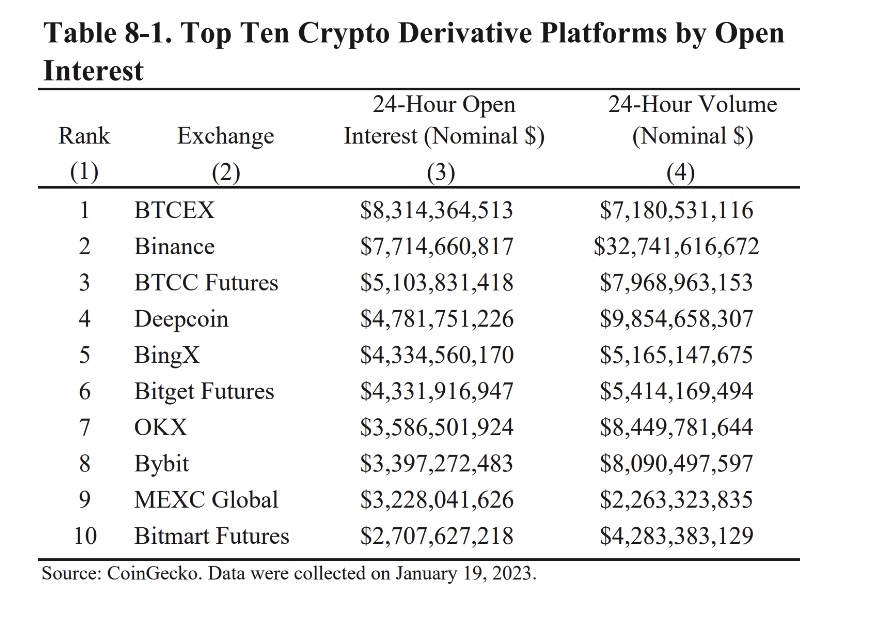The White House released its annual economic report on March 20, and it dedicated an entire section to digital assets.
The authors should be commended for doing so. I largely agree with the report’s assessment that certain aspects of the digital asset ecosystem are causing problems for consumers, financial systems and the environment.
However, as a builder in the digital asset space, I cannot disagree more with its conclusion that “crypto assets currently do not offer widespread economic benefits.”
To understand how the White House plans to regulate digital assets, it’s important to examine what was left out of the White House report. A particularly out-of-touch piece of data that made the report was a list titled, “Top Ten Crypto Derivative Platforms by Open Interest.” It included offshore exchanges including BingX, Deepcoin and BTCC Futures.
While most digital asset proponents would agree with the report that these exchanges are not reputable by any means, and open interest is a metric that is trivially easy to manipulate, it’s neither here nor there. The real issue is why the White House report chose to focus on offshore exchanges that have no checks and balances and aren’t even open to United States-based users.
What’s more revealing is the fact that they choose to completely ignore the largest derivatives product that is available to U.S.-based users, one that has been vetted and received approval from the Commodities Futures Trading Commission to launch in a safe and regulated manner: the Bitcoin (BTC) and Ether (ETH) futures offered by the Chicago Mercantile Exchange (CME).
Related: What Paul Krugman gets wrong about crypto
The CME is an entity that is fully compliant with all U.S. laws and regulations and, with the recent launch of the Micro Bitcoin and Micro Ether futures, has made it possible for retail investors to access a safe, regulated and U.S.-based futures derivative product.
Why would they choose to omit the mention of the CME?
Could it be because the CME can only list commodities, putting into question the Securities and Exchange Commission’s position that ETH is a security?
Furthermore, none of the platforms mentioned by the White House have any name recognition among crypto-native investors. While this could be attributed to the fact that there are relatively few derivative exchanges on the market and that none of these exchanges seem to have filled the void left by FTX, another omission is very telling.
The White…
Click Here to Read the Full Original Article at Cointelegraph.com News…
























